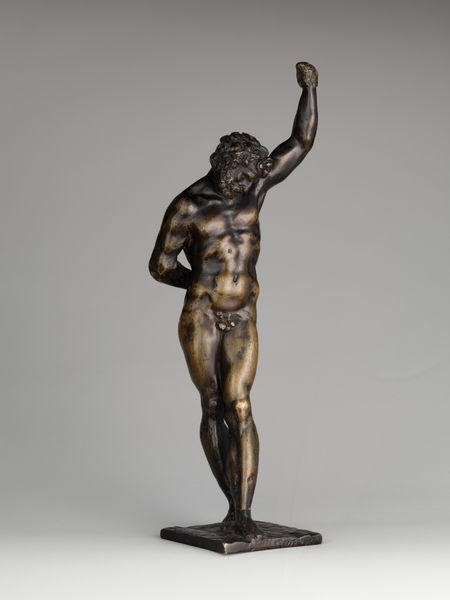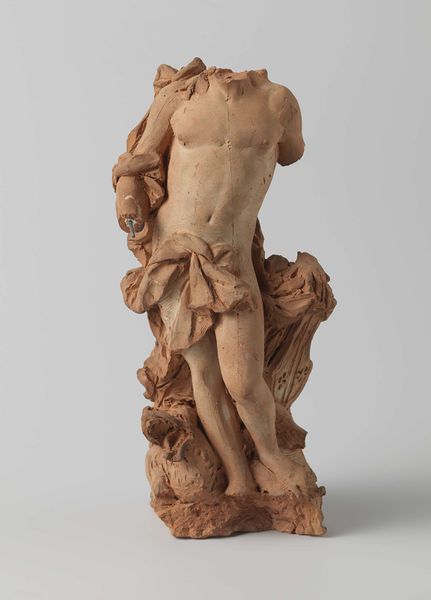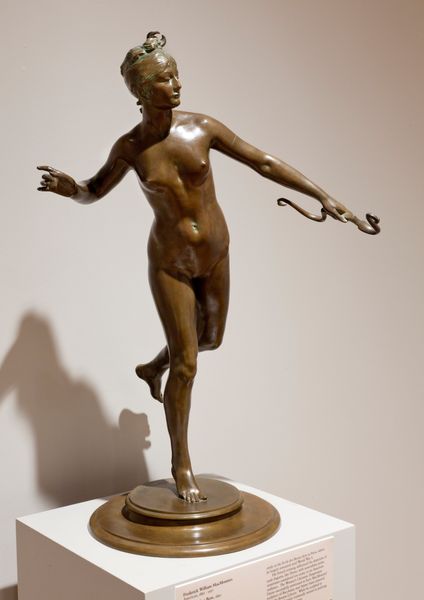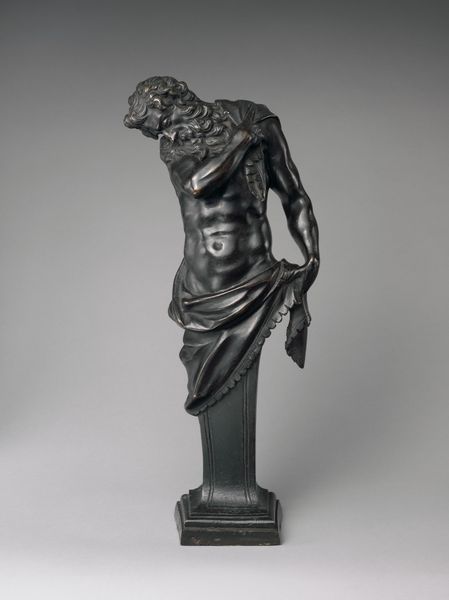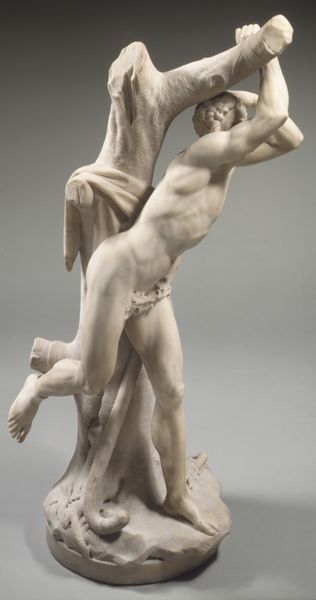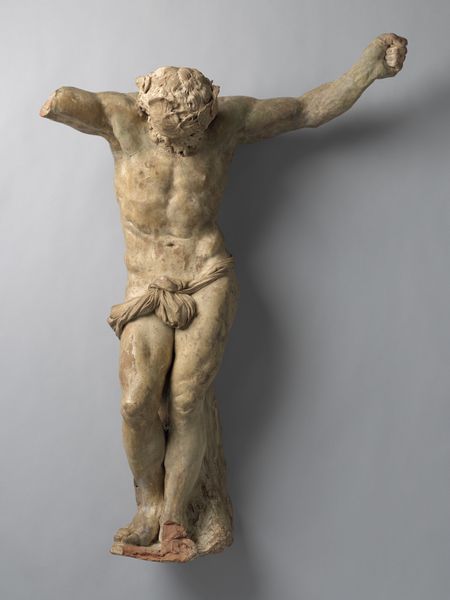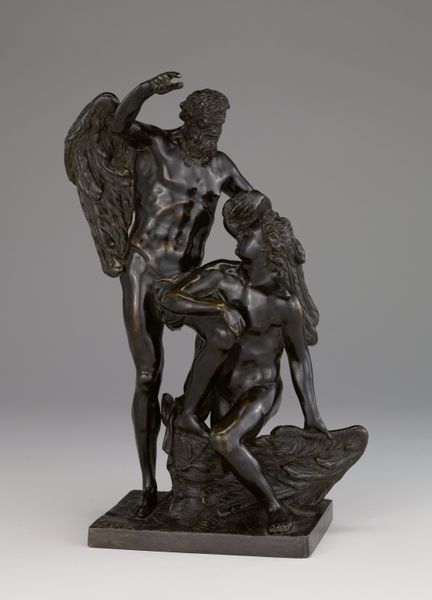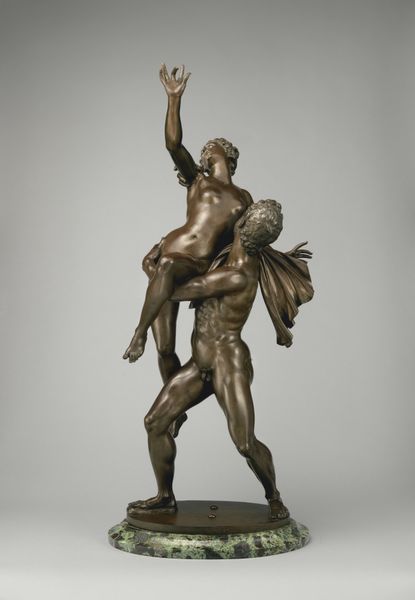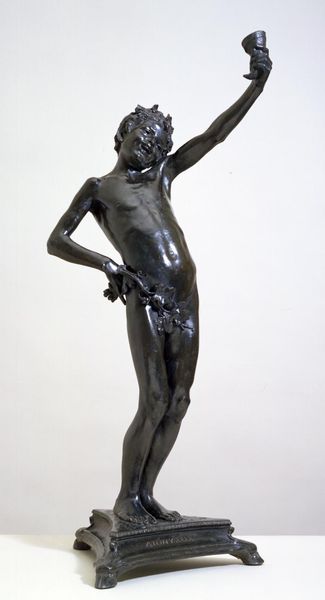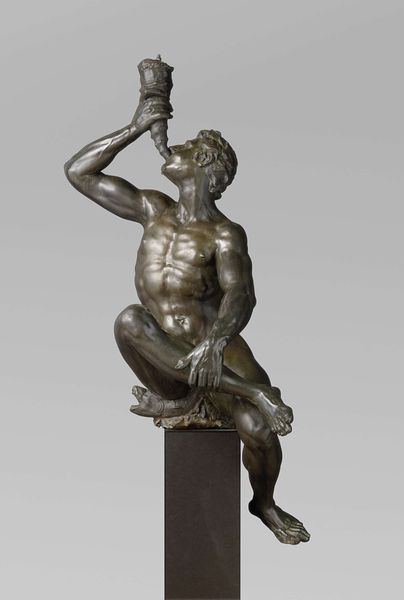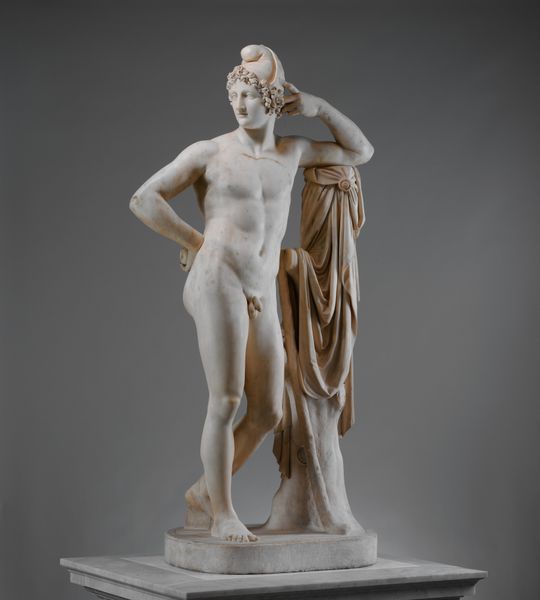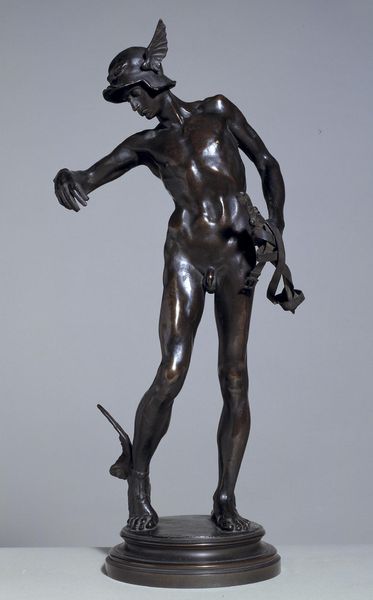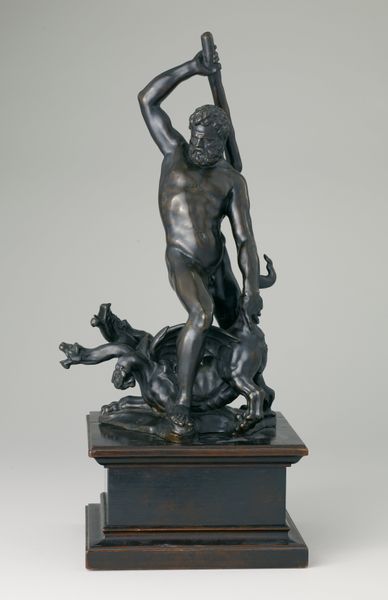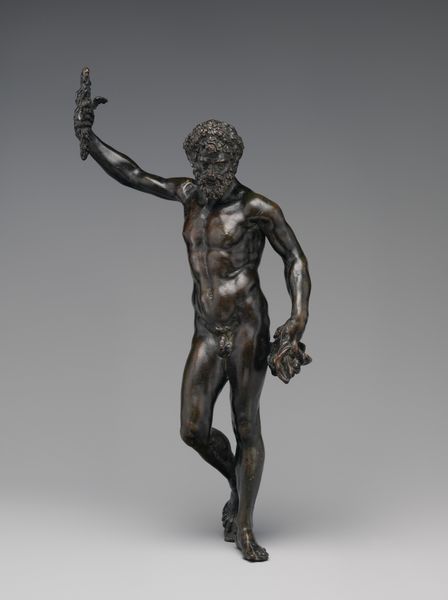
Copyright: Public domain
Curator: Welcome. Before us stands Jean-Baptiste Carpeaux's exuberant bronze sculpture, "The Genius of Dance," created in 1869. Editor: My first impression? A burst of joyful energy, captured in metal! The figure seems to be swept up in a frenzy, wildly alive and expressive. The Baroque dynamism is clear from even here. Curator: Indeed. Notice how Carpeaux masterfully employs spiraling lines and asymmetrical composition to convey motion. The draped fabric seems to billow around the central figure, further emphasizing the energy and a certain element of erotic charge typical for its time. Note also that a putto is struggling with an attribute of music to hold her earth-bound—but not with any luck. Editor: And how interesting it is, to reflect on the context of the Second Empire. Carpeaux created this as part of a commission for the façade of the Paris Opera. Think about the Opéra Garnier, commissioned by Napoleon III himself, and its central function to stage the cultural productions of a modern French state—but the piece generated some controversy even for its moment! Curator: The overt sensuality likely contributed. But formally, look at how Carpeaux uses contrasting textures. The smoothness of the dancer's skin versus the rougher texture of the surrounding foliage and the cherubic forms supporting the dancer contribute to its sensual feeling. This is not just representational skill but expressive artistry using the raw materials themselves! Editor: Exactly! And to further our conversation about sensuality, we can look at its nakedness in relation to representations of the feminine body at this historical moment. But, how this idealized and overtly sensual form acted to reinforce notions of bourgeois civility is essential when thinking through what purpose such commissions served within France at this moment. What this communicates—and perhaps even attempts to cover over—says something important. Curator: A powerful reminder that artistic expression is inextricably linked to its socio-political environment. From my perspective, there's a structural harmony present despite its Baroque affectations, but the statue feels more alive through a cultural reading, nonetheless! Editor: Absolutely. The statue offers us not just an aesthetic experience but a critical lens through which to examine Second Empire ideologies, and the tensions implicit within its art. Curator: So true. May we all feel empowered to view and reflect upon artworks using whatever context is necessary. Editor: I concur; thank you. There's power in many readings.
Comments
No comments
Be the first to comment and join the conversation on the ultimate creative platform.
